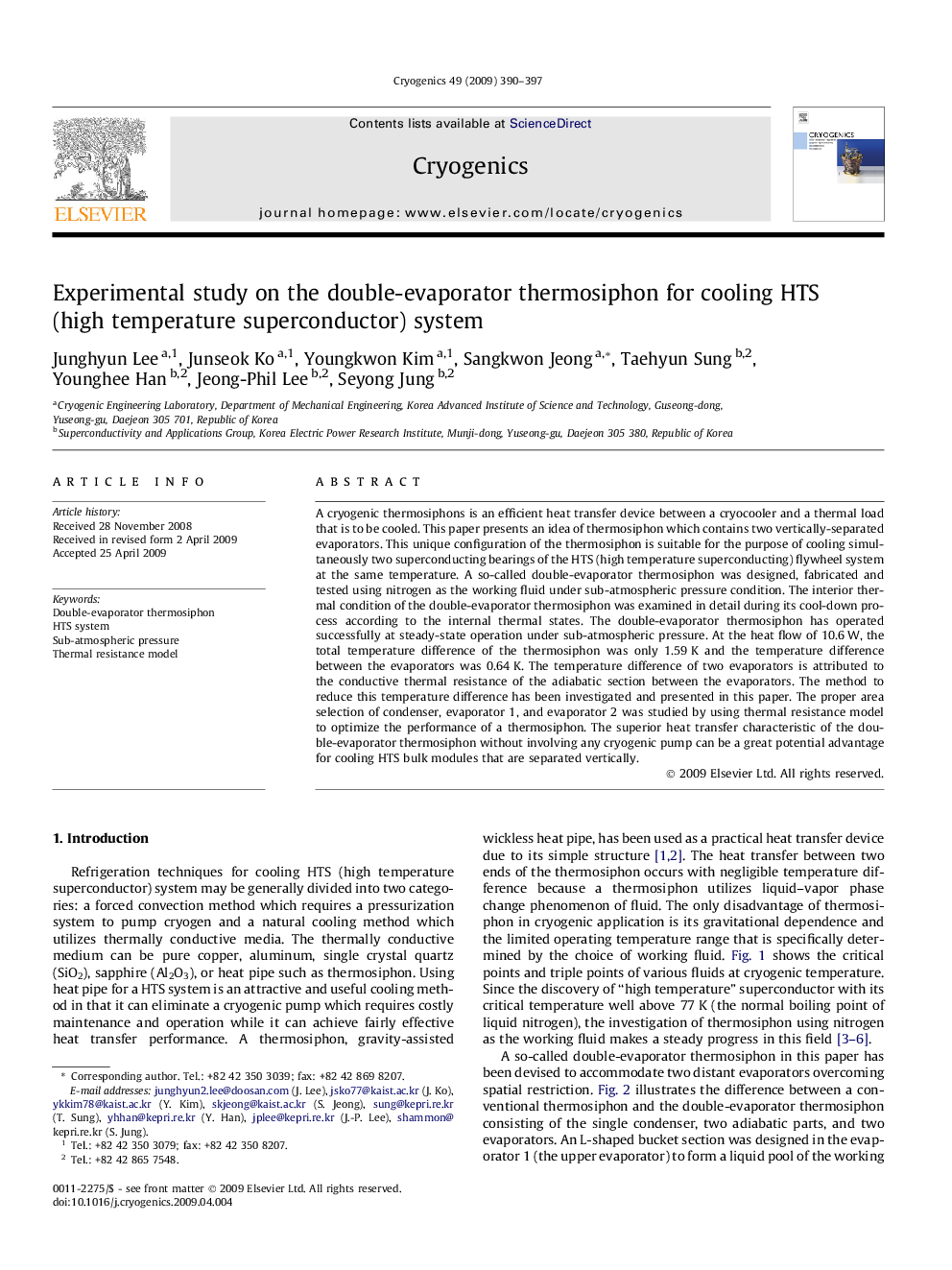| Article ID | Journal | Published Year | Pages | File Type |
|---|---|---|---|---|
| 1508178 | Cryogenics | 2009 | 8 Pages |
A cryogenic thermosiphons is an efficient heat transfer device between a cryocooler and a thermal load that is to be cooled. This paper presents an idea of thermosiphon which contains two vertically-separated evaporators. This unique configuration of the thermosiphon is suitable for the purpose of cooling simultaneously two superconducting bearings of the HTS (high temperature superconducting) flywheel system at the same temperature. A so-called double-evaporator thermosiphon was designed, fabricated and tested using nitrogen as the working fluid under sub-atmospheric pressure condition. The interior thermal condition of the double-evaporator thermosiphon was examined in detail during its cool-down process according to the internal thermal states. The double-evaporator thermosiphon has operated successfully at steady-state operation under sub-atmospheric pressure. At the heat flow of 10.6 W, the total temperature difference of the thermosiphon was only 1.59 K and the temperature difference between the evaporators was 0.64 K. The temperature difference of two evaporators is attributed to the conductive thermal resistance of the adiabatic section between the evaporators. The method to reduce this temperature difference has been investigated and presented in this paper. The proper area selection of condenser, evaporator 1, and evaporator 2 was studied by using thermal resistance model to optimize the performance of a thermosiphon. The superior heat transfer characteristic of the double-evaporator thermosiphon without involving any cryogenic pump can be a great potential advantage for cooling HTS bulk modules that are separated vertically.
